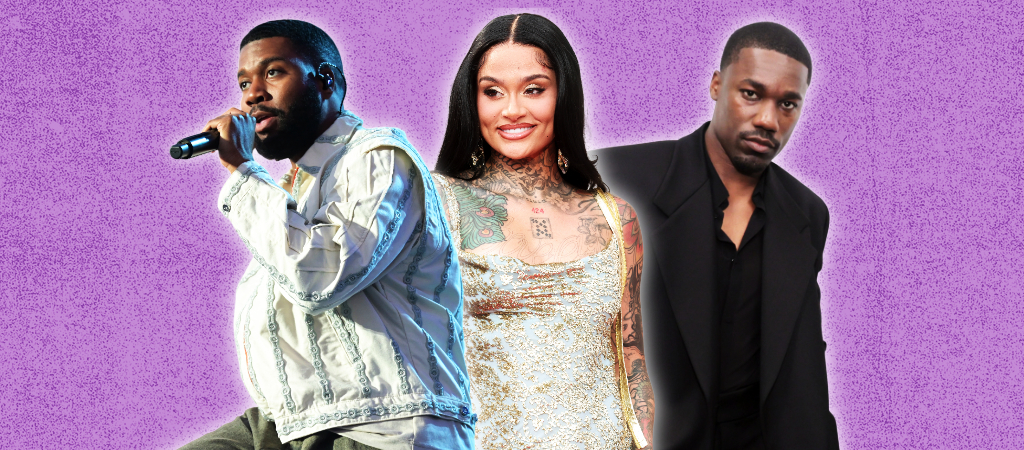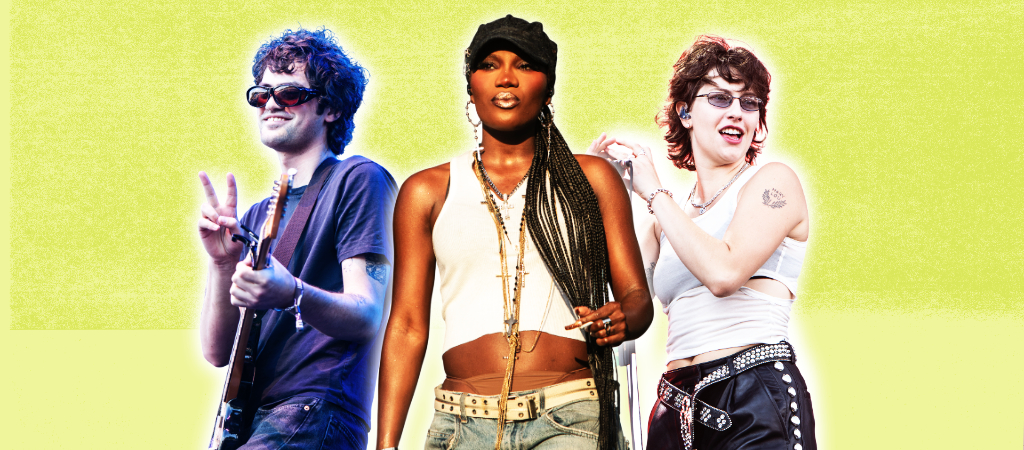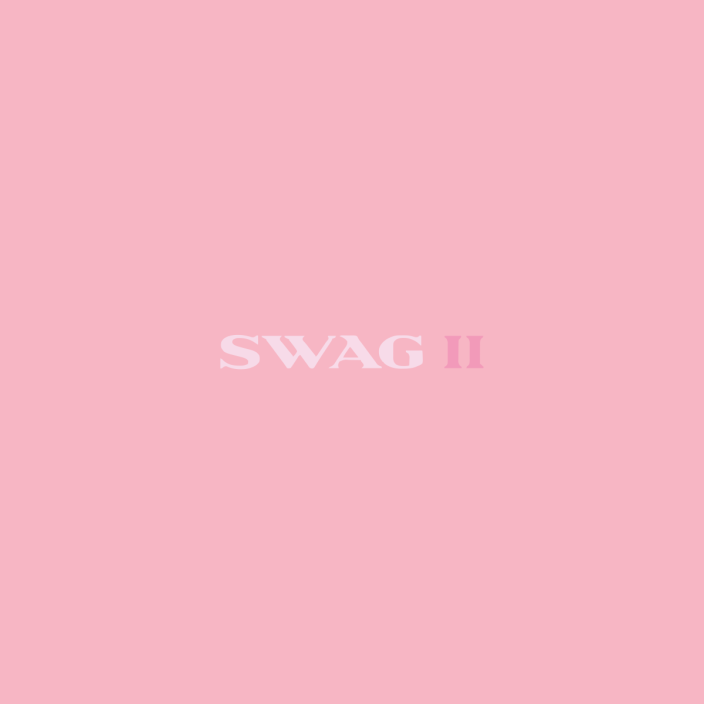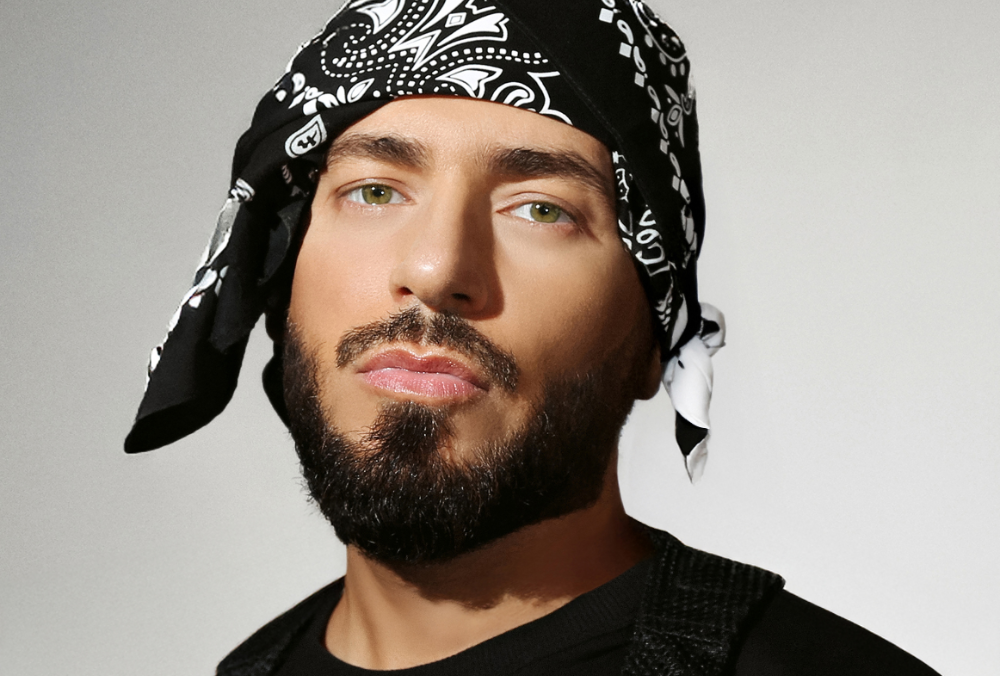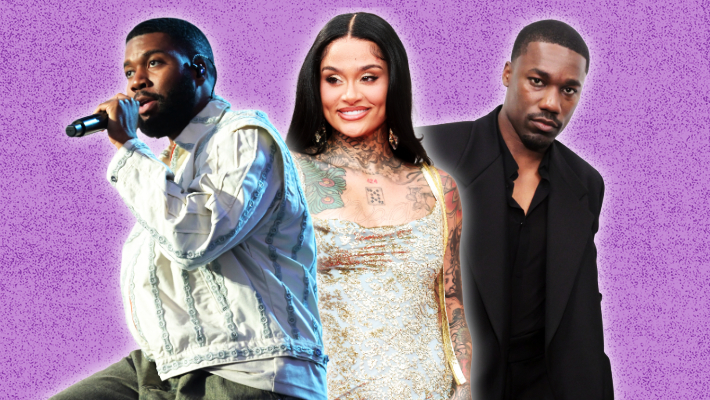
The last time fans of R&B were as spoiled for choice as they are now, Ne-Yo was two-stepping across stages in his fedora singing “Closer.”
On Tuesday night at the Greek Theatre in Los Angeles, nearly 6,000 fans packed the outdoor venue for the first night of Long Beach crooner Giveon’s sold-out, two-night hometown tour stop, singing along every word. A few miles south, his Texas-bred fellow baritone Khalid was hosting the listening experience for his upcoming album After The Sun Goes Down, which drops this Friday, October 10. That event also had fans lining up down the block to get into the Arts District warehouse in which it was hosted.
The night before, at the Grammy Museum, I had the privilege of attending the Grammy Museum’s Spotlight series concert with child-actor-turned-funk-soul-icon Leon Thomas at that venue’s rooftop Ray Charles Terrace. That’s where Thomas joked about Ne-Yo’s heyday as the “golden era of R&B.” Then, on the way home, as the radio played one of the seemingly dozens of covers of Kehlani’s latest inescapable hit, “Folded” (both nights!), I mused that Thomas might have been mistaken; If ever R&B has had a “golden era,” it’s now. R&B is officially “back” — even though it never really left.
Just a couple of years ago, this didn’t appear to be the case. In 2020, Billboard ran a cover feature with Jhené Aiko, Kehlani, Summer Walker, and Teyana Taylor bemoaning the state of R&B, while in 2022, Bad Boy impresario Sean “Diddy” Combs caught a backlash over declaring that “R&B is dead,” forcing him to walk back his statement a few days later. At the same time, Uproxx Wongo Okon maintained his weekly “Best Of R&B” column, highlighting hundreds of artists flourishing in the space, apparently just out of public view.
Then, last year, it seemed that the supposedly dormant genre had a massive resurgence, thanks in large part to breakout performances such as Usher’s Super Bowl Halftime Show and Victoria Monét’s Best New Artist win at the Grammys. After years of major labels downplaying R&B in favor of SoundCloud rap, trap-accented pop music, and heartland country, a shift has occurred at the mainstream level. So, what happened?
In short, the only thing that changed was the music industry establishment’s attitude toward Black music being made by Black people. In my review of Doja Cat’s new album Vie, I recounted how the conventions of 1980s R&B and boogie were subsumed into the umbrella of pop, while the artists who made such music were filtered out. Those sounds continued to crop up in upbeat pop hits in recent years, but music publications either overlooked, ignored, or were unaware of those influences, downplaying them in favor of generic references to ’80s styles without naming the artists who pioneered them.
And, as the singers in Billboard‘s 2020 story pointed out, R&B artists were often shunted away from mainline charts and playlists into the dreaded “urban” category, limiting their reach and putting a paper ceiling on promotional budgets and marketing opportunities. As Living Legends Foundation chairman David Linton pointed out then, “The public doesn’t know the difference — only those at the labels who control the budgets.” Likewise, Aiko called the spade what it was, saying, “Now there are traditionally pop artists doing R&B albums, but it’s called pop.”
However, the R&B artists leading this resurgence figured out a crafty strategy for sidestepping this tendency. As pop hijacked contemporary sounds, R&B artists looked further back, bringing back foundational elements such as live instrumentation and big band sounds. In July, as Giveon prepared to release his new album Beloved, he told me in an interview that he intentionally wanted to pull from past decades like the ’60s and ’70s because, in his words, “even though my fan base is still the younger group, they’re not even going to know where that’s from. I feel honored to be able to introduce them to that world and that sound.”
And that juke is the key to the overall resurgence of R&B: Everything old is new again, especially for generations that get lightly joshed on social media for constantly “discovering” things that precede them by decades. It’s like watching a favorite childhood movie with a much younger relative. For them, it’s a mind-blowing new experience, while for you, it’s a nostalgic one, bridging that gap between generations.
Giveon’s show at the Greek exemplified this effect to a tee. While live bands are more or less old hat at this level, even for artists of Giveon’s generation and younger, he wasn’t content simply to present a five-piece with backup singers. Instead, the band sprawled across the stage with at least ten pieces, generating a lush soundscape that differentiated him from even the veteran R&B stars who kept the torch alight during the genre’s mainstream fallow period over the past decade and a half.
He’s not the only one to go this route, either; At last year’s Camp Flog Gnaw Carnival, British soul revivalist Raye also brought the big-band vibes, including a brass trio in her boisterous, full-bodied set. Her fellow Brit, burgeoning vocal star Sasha Keable, opened for Giveon at the Greek (her first-ever Los Angeles show, and certainly not her last), and you could almost hear how magnificent she’ll sound when she’s able to follow their example in a few years.
If the jam-packed past few days are proof of anything, it’s that it’s up to recording artists to stay the course, rather than chase trends. By staying true to their sound and the roots of the genre, today’s R&B artists laid the groundwork for the fickle industry’s eventual return as it sought more fertile soil to cultivate. And maybe there’s a lesson for the industry in there, too: Giving equitable opportunities for all artists, not just the “trendy” few, means more chances for the stars that are already around to shine.
Check out Giveon’s Sound Check episode below:
